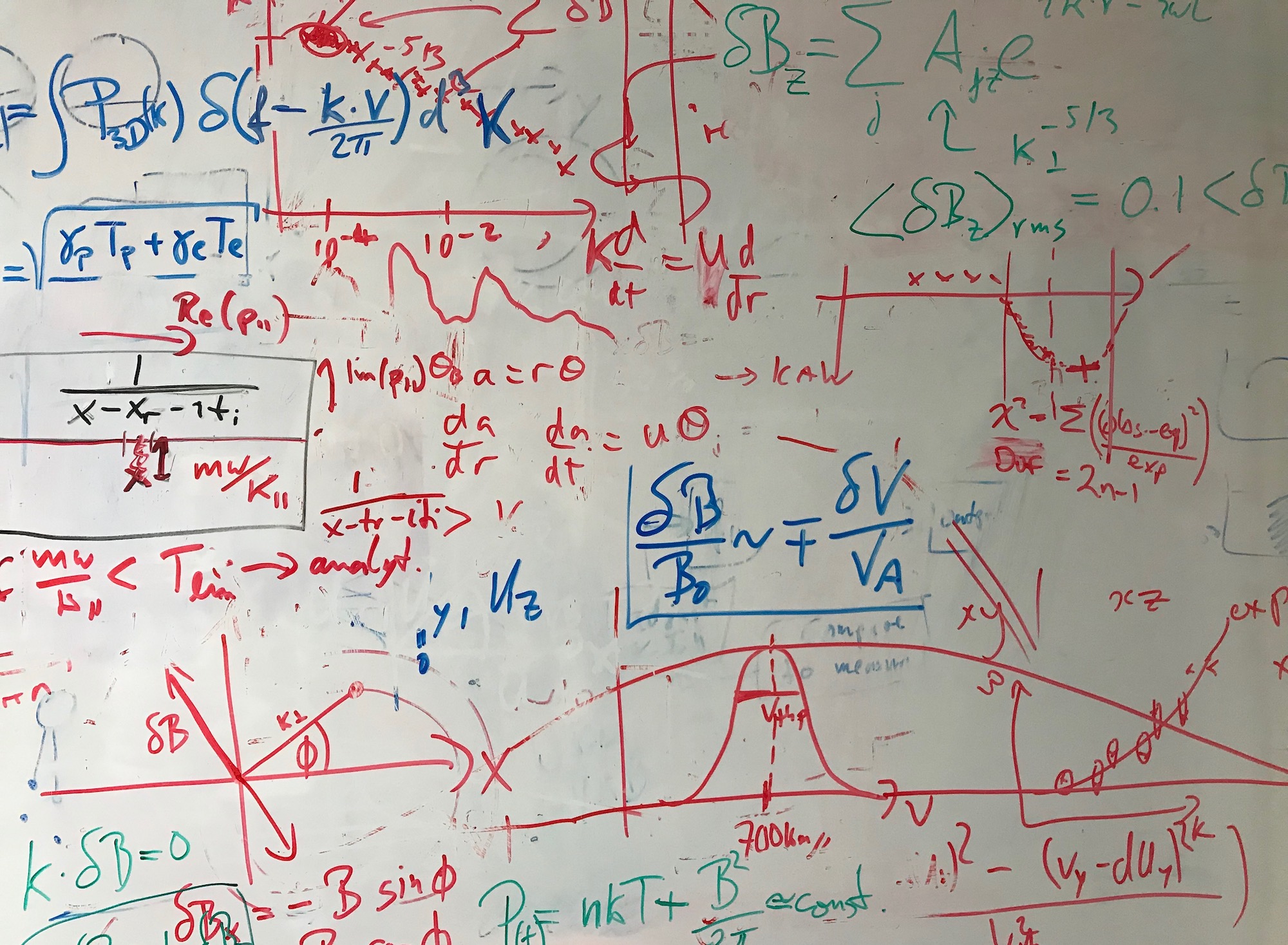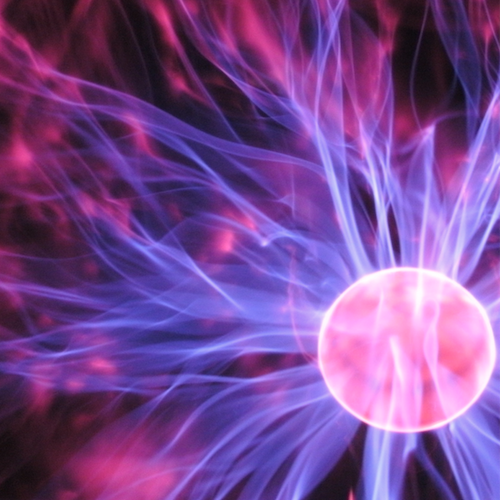 In my research, I primarily study space plasmas such as the solar wind, the solar corona, planetary plasmas, and the Earth’s plasma environment.
A plasma is a gas in which the ions and electrons are separated from each other and do not form neutral atoms like in a regular gas. The moving charged plasma particles modify and react to electric and magnetic fields. This leads to a behaviour that is very different from the behaviour of neutral gases like the air. In these complex systems, collective processes emerge, and methods from the research field of statistical physics are required for their understanding. We can measure plasmas in our cosmic neighbourhood directly and in situ with the help of spacecraft in our solar system.
From measurements in space plasmas, we can learn about fundamental plasma processes that are important for astrophysical systems across our Universe. These systems include accretion discs around black holes, the interstellar medium, or the plasma between galaxies. Solar-terrestrial interactions between these plasma systems and the Earth cause space weather, which can have a serious impact on our modern, technological society. My research underpins our understanding and forecasting capabilities of space weather as a serious threat to human ground and space activities.
In my research, I primarily study space plasmas such as the solar wind, the solar corona, planetary plasmas, and the Earth’s plasma environment.
A plasma is a gas in which the ions and electrons are separated from each other and do not form neutral atoms like in a regular gas. The moving charged plasma particles modify and react to electric and magnetic fields. This leads to a behaviour that is very different from the behaviour of neutral gases like the air. In these complex systems, collective processes emerge, and methods from the research field of statistical physics are required for their understanding. We can measure plasmas in our cosmic neighbourhood directly and in situ with the help of spacecraft in our solar system.
From measurements in space plasmas, we can learn about fundamental plasma processes that are important for astrophysical systems across our Universe. These systems include accretion discs around black holes, the interstellar medium, or the plasma between galaxies. Solar-terrestrial interactions between these plasma systems and the Earth cause space weather, which can have a serious impact on our modern, technological society. My research underpins our understanding and forecasting capabilities of space weather as a serious threat to human ground and space activities.
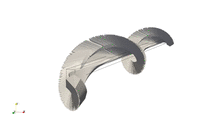 Under certain conditions, a plasma can be described like a fluid (for example with the equations of magnetohydrodynamics), but often a description based on kinetic physics, a sub-field of statistical mechanics, is necessary. I work on the kinetic aspects of the plasma behaviour in space plasmas. I am especially interested in wave-particle interactions, kinetic waves and instabilities, turbulence, plasma heating, shock waves, and their impact on the global plasma behaviour. This work underpins the understanding of space weather that occurs through the interactions of collisionless, kinetic plasmas with our Earth environment.
Under certain conditions, a plasma can be described like a fluid (for example with the equations of magnetohydrodynamics), but often a description based on kinetic physics, a sub-field of statistical mechanics, is necessary. I work on the kinetic aspects of the plasma behaviour in space plasmas. I am especially interested in wave-particle interactions, kinetic waves and instabilities, turbulence, plasma heating, shock waves, and their impact on the global plasma behaviour. This work underpins the understanding of space weather that occurs through the interactions of collisionless, kinetic plasmas with our Earth environment.

Image Credit: NASA’s WIND spacecraft from nasa.gov
https://www.unh.edu/unhtoday/news/release/2017/05/15/unh-researcher-identifies-key-differences-solar-wind-models
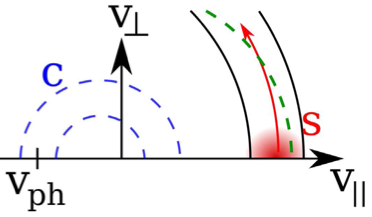 Our research on the scattering of the electron strahl has been featured in a UCL press release. The electron strahl is a beam of faster electrons that travel through the solar wind along the magnetic field and away from the Sun. Although this strahl has often been observed, we still don’t understand its generation in the solar corona or its evolution as it travels through the space between the planets. Our theory suggests that the strahl electrons are scattered by an instability of a certain type of plasma wave: the oblique fast-magnetosonic/whistler wave. The strahl electrons can create this instability themselves as they move along the magnetic field. Our initial comparison with spacecraft data supports our theory. However, we must test this with more detailed measurements in the future. Solar Orbiter will deliver excellent data for this purpose. Here is the link to the press release:
Our research on the scattering of the electron strahl has been featured in a UCL press release. The electron strahl is a beam of faster electrons that travel through the solar wind along the magnetic field and away from the Sun. Although this strahl has often been observed, we still don’t understand its generation in the solar corona or its evolution as it travels through the space between the planets. Our theory suggests that the strahl electrons are scattered by an instability of a certain type of plasma wave: the oblique fast-magnetosonic/whistler wave. The strahl electrons can create this instability themselves as they move along the magnetic field. Our initial comparison with spacecraft data supports our theory. However, we must test this with more detailed measurements in the future. Solar Orbiter will deliver excellent data for this purpose. Here is the link to the press release:
https://www.ucl.ac.uk/mathematical-physical-sciences/news/2019/dec/ucl-study-electrons-solar-wind-appears-astrophysical-journal
 With two of my colleagues, I have written the review article “The multi-scale nature of the solar wind”. This open-access article describes the plasma physics in the solar wind that couples the large scales with the small scales. It includes a brief, general introduction to the plasma physics of the solar wind, a description of measurement techniques used on spacecraft, and discussions of collisions, waves, turbulence, and kinetic instabilities in the solar wind. We have written this review article for early-stage PhD students or early-career post-docs entering the field of solar-wind research. As a truly Living Review, we will update the article continuously.
With two of my colleagues, I have written the review article “The multi-scale nature of the solar wind”. This open-access article describes the plasma physics in the solar wind that couples the large scales with the small scales. It includes a brief, general introduction to the plasma physics of the solar wind, a description of measurement techniques used on spacecraft, and discussions of collisions, waves, turbulence, and kinetic instabilities in the solar wind. We have written this review article for early-stage PhD students or early-career post-docs entering the field of solar-wind research. As a truly Living Review, we will update the article continuously.
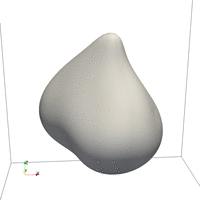 This movie shows an isosurface of the proton velocity distribution function in the solar wind. It was observed by the Helios spacecraft in the 1970s. The distribution function fully describes the kinetic state of the plasma particles. The little bump on the upper side of this isosurface represents the “proton beam”, which is a bunch of faster protons that stream through the core protons. Solar Orbiter and Parker Solar Probe measure distribution functions with great resolution.
This movie shows an isosurface of the proton velocity distribution function in the solar wind. It was observed by the Helios spacecraft in the 1970s. The distribution function fully describes the kinetic state of the plasma particles. The little bump on the upper side of this isosurface represents the “proton beam”, which is a bunch of faster protons that stream through the core protons. Solar Orbiter and Parker Solar Probe measure distribution functions with great resolution.
What is going on here?
